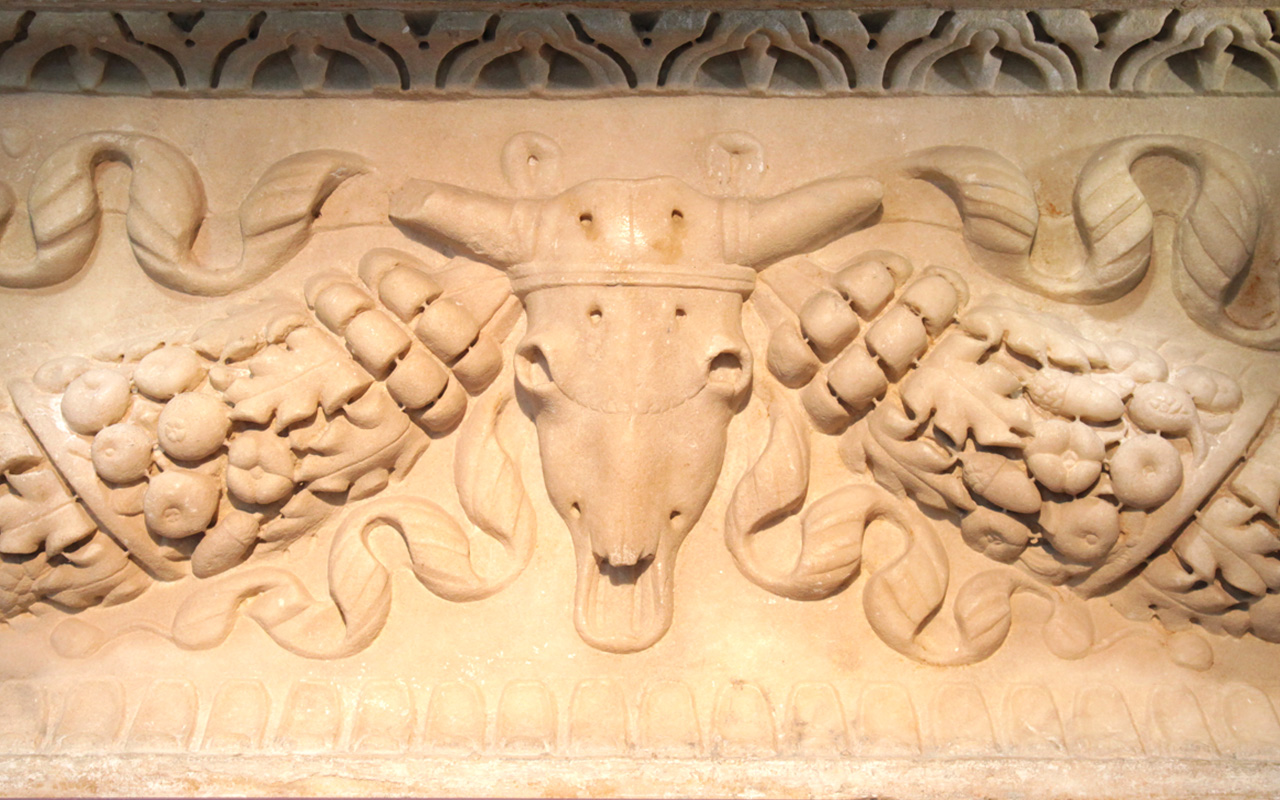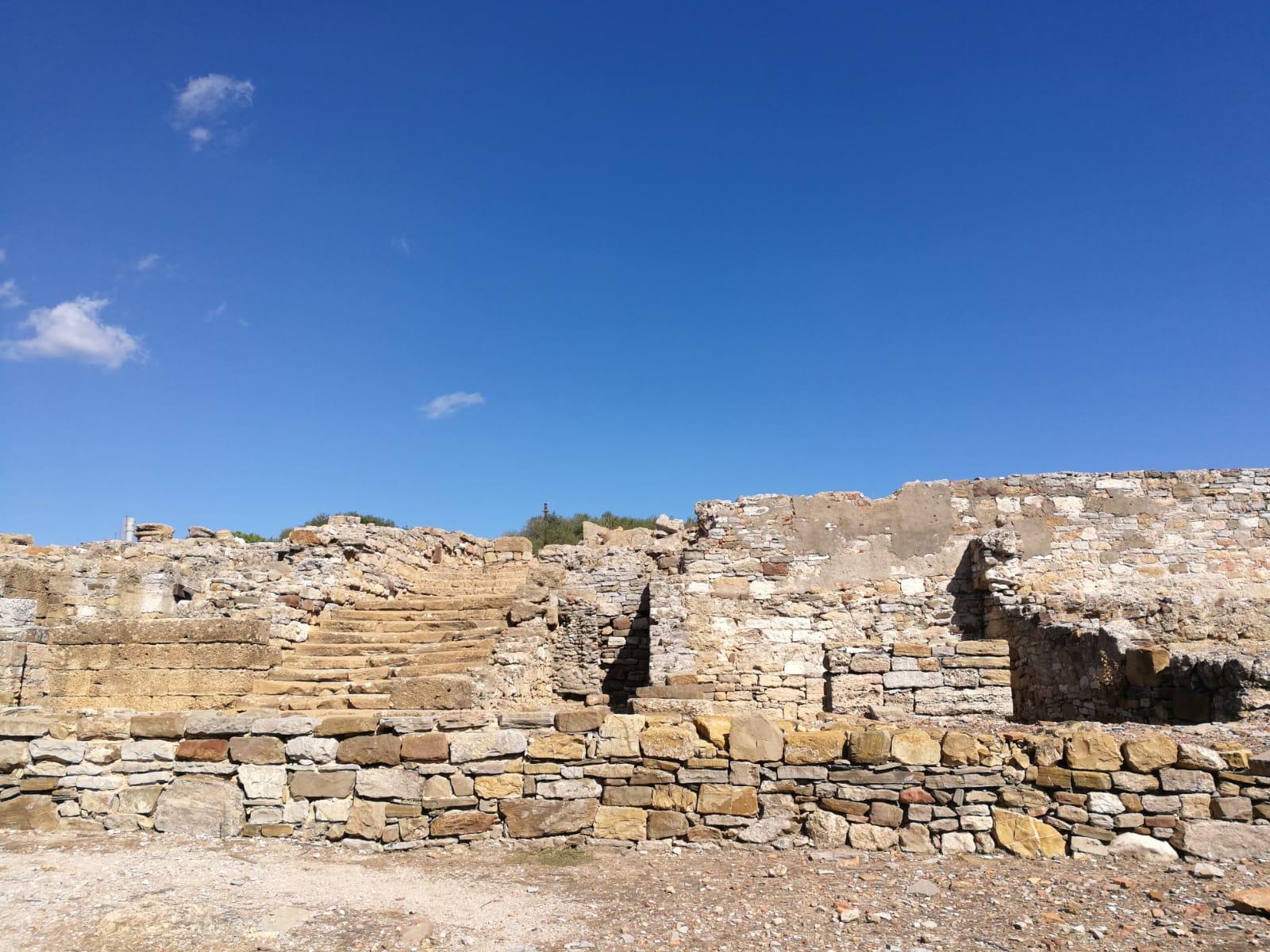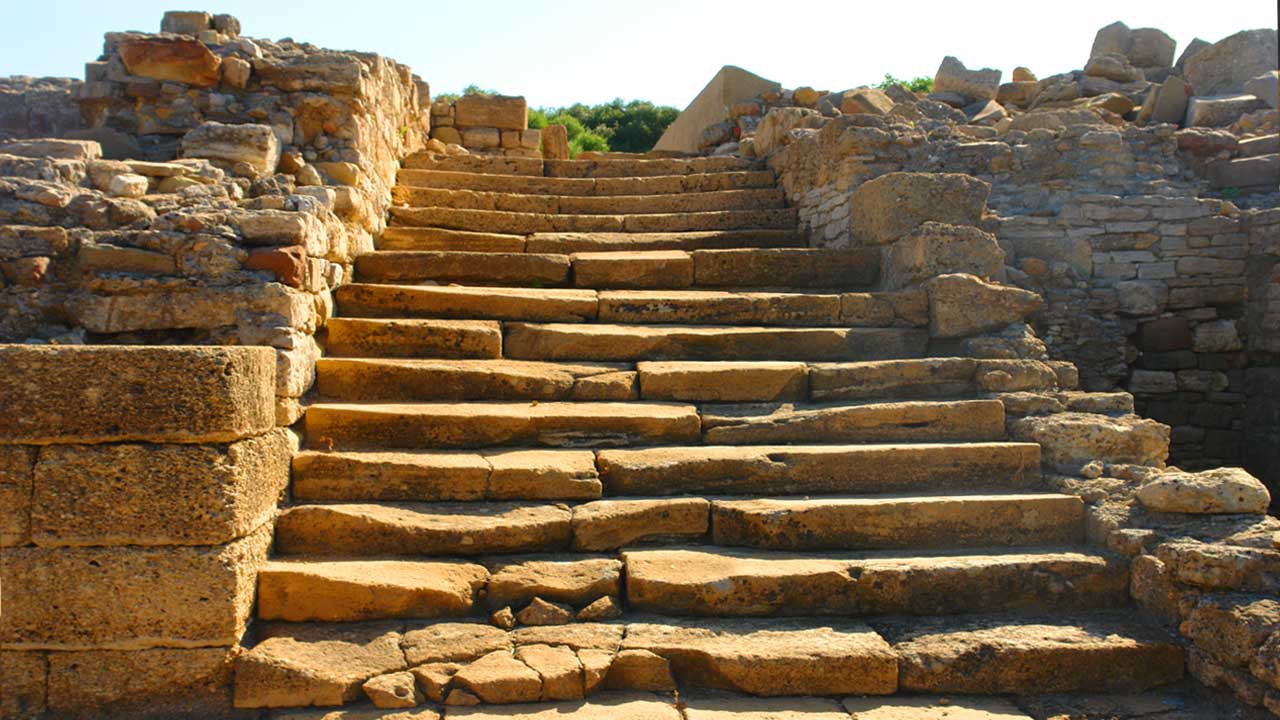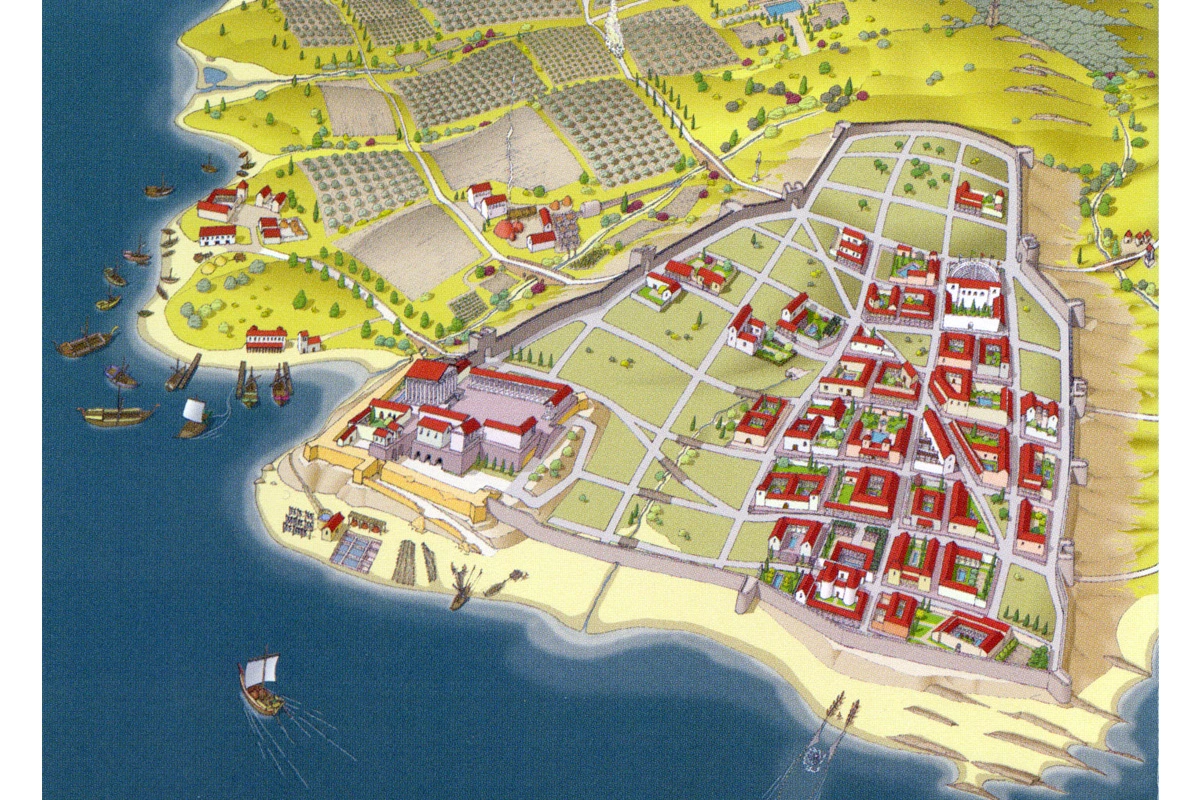Enjoy
San Roque
we want you
Carteia
Talking about Carteia Archaeological Site entails focusing for a moment on the historical relevance of the wider Gibraltar Area. This ancient city, located in the municipality, is undoubtedly one of the most important archaeological sites on the Iberian Peninsula. After all, the Strait of Gibraltar has not only always been a natural passage point, but also of geostrategic importance since ancient times.
The city of Carteia is Phoenician in origin, founded in the 6th century BC, at a different place to the current one. This initial settlement was situated in what we know today as Cerro del Prado, on the banks of the River Guadarranque estuary, where different archaelogical remains were found, although they cannot be visited nowadays.
In the 4th century BC as a consequence of natural causes, the river succesively silted up and due to strategic interests, the Carthaginians (or Punics), the city dwellers of that time, decided to relocate the city at the site we are familiar with today. You can see foundation deposit from this period in the Archaeological Museum, a real marvel which is remarkable to due its religious and political implications.
Carteia, which was well-known in ancient times thanks to written sources, was a strategic point not only because it controlled the Strait of Gibraltar. It was a hot spot throughout history, but also a prosperous city that lived off trade and exploit rich natural resources in the surroundings. Nevertheless, after Rome was truimphant in the Punic Wars, the city started a new age of splendour under the rule of the masters of the Mediterranean.
It was in the year 171 BC when a milestone in the history of Rome occurred, which, by chance, would have Carteia as the main location. The city was named Colonia Libertinorum Carteia, the first Latin colony outside present-day Italy, and took in 4,000 men, the offspring of Roman soldiers and Hispanic women. According to Titus Livy, when talking about of this unthinkable event a few years earlier, he wrote about a new reality the inhabitants faced as the city grew.



In Republican times Carteia had its strategic importance once again, although this time it would not turn out so well. The city aligned itself with Pompey the Great’s side, who would eventually lose the civil war. In fact, the city was a operational base for Pompey’s sons, Gnaeus and Sextus, but after Caesar’s victory the city was severely punished.
Despite this setback, the city made a strong comeback and during the Imperial period it experienced its maximum splendour. Its perimeter was extended and the forum, temples, walls and theatre were built, the former being one of the largest in Andalusia. All of these aspects can be admired on a tour, which is like travelling through the history of our ancestors.
Later, the city was inhabited by Visigoths and Byzantine Empire, and then by Muslim forces. It is around this time when the Cartagena Tower was built, a stage for the battles between Arabs and Christians. Evidence of sieges can be seen in the Museum.
Then in the modern era the city was abandoned for good, although the Cortijo del Rocadillo country house was built over the remains, despite not being demolished until the late 20th century.
Visiting Carteia is like going back in time to revisit our past in which we are witnesses to the key importance that this area has had for different Mediterranean civilisations. Its location is already a good reason to go on a visit, but also visitors can encounter a Republican temple, a large forum with tabernae, baths with different visible pools, sections of the city walls and a large theatre, built on a hill with its rows of seating, an ingenious architectural solution very often used by the Romans.
On top of all of this, the tour features a view of the Rocadillo Tower, built in the 16th century. You can also get a glimpse of more recent history as Carteia Archaeological Site also includes a WWII bunker which has been restored and is open to the public. This bunker is part of a chain of fortifications that were built along the coast of Cadiz during the Second World War.
This is a real tour of the history of the Mediterranean which is more alive than ever, and with excavations still being undertaken, there are sure to be more surprises in the future.
CARTEIA ARCHAEOLOGICAL SITE
Address: Avda. del Puerto, s/n. Guadarranque, 11369 San Roque, Cádiz
Phone: 956 908 030 / 600 143 014
Email: carteia.aaiicc@juntadeandalucia.es
Free admission and guided tour
Opening hours:
From Wednesday until Sunday, at 10:00 am, 11:00 am and 12:00 pm, with a limited capacity of 25 people per group. Please be punctual
All visits are guided tours. Due to security reasons you are NOT allowed to wander around on your own.

